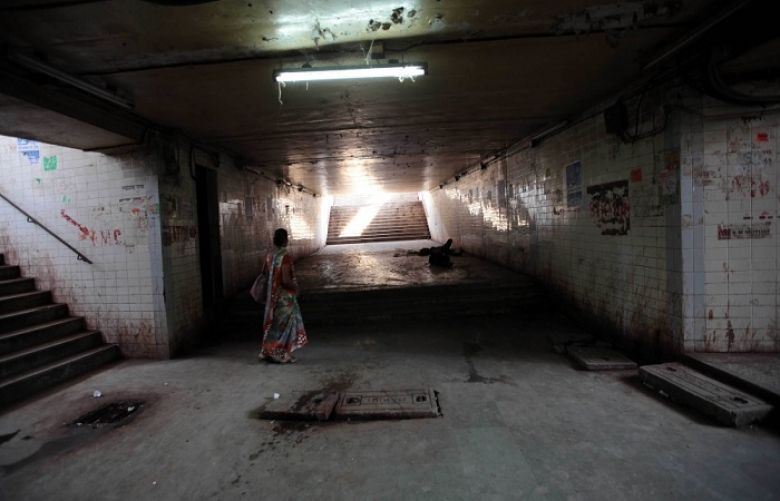The names of patients have been changed to protect their identities. Nandita* doesn't remember when she first used Methylphenidate, a central nervous system stimulant.
She is now 26 years old and recovering, but was addicted to two substances, not including, she says, alcohol and cigarettes.
"The first few times are a blur, it seems like they were many years ago," she tells Al Jazeera.
She sought medical help two years ago. Her parents run a real estate company in Bangalore and live in an expensive neighbourhood.
Though several young women like Nandita check in to rehabilitation centres, addiction among Indian women is barely researched and analysed.
Defined as a disease by medical associations across the world and the World Health Organization, addiction can be caused by a combination of behavioural, environmental and biological factors.
Indian female addicts struggle specifically because of social and family pressure.
In short, the stigma is much higher, according to Dr Reni Thomas at St Johns Hospital in Bangalore, and so women are less likely to break out of the cycle, compared with men.
The Bangalore-based doctors at the National Institute of Mental Health and Neuro-Sciences (Nimhans) report an increasing number of young women seeking treatment.
The rehabilitation centre to treat addicts is more than 25 years old, but in 2015, the doctors felt the need to open a separate centre for women.
Nandita is among the fortunate, her parents can afford expensive care. Moreover, the "shame" associated with addiction is less pervasive among rich communities.
Mayamma*, an addict whose family is poor, is her parent's seventh child.
"No one kept track of my birthday," Mayamma says.
She has been to state-funded rehabilitation centres in Bangalore and Chennai, the two cities she has worked in.
She was married at a young age to a man who introduced her to arrack, or locally made alcohol.
"We began to drink together at night," she said.
According to a UN study on female drug users in India, "substance use among women is associated with early initiation into physical relation, which is often coerced.
"Women are dually affected by substances, both as partners of men using substances and their own use. Since, more often than not, women using substances are also partners of users they have a double disadvantage."
During the day, Mayamma and her husband worked as day labourers at a construction site together.
"We had a fairy-tale relationship, until my husband died [after consuming illegal alcohol]," she says.
His death was a crude reminder for her to sober up and seek medical help so that her children had at least one parent.
Pratima Murthy, a doctor at Nimhans, said women are often introduced to drugs by relatives.
And other family members also take female relatives to hospital when they notice dysfunctional behaviour.
"If they don't perform their duties in the household, family members are alerted," said Murthy.
Although women willingly attend the rehabilitation scheme, they are at risk of relapsing because of the burden of responsibility towards their families.
"It is not enough to ensure the women have steered clear of substances, family and societal support is required to ensure they are kept that way. Sadly, many women lack such support," she added.
Since men are seen as the main breadwinners, they are usually more supported.
Anish Cherian, who works at Nimhans' psychiatric unit, said it is common to see women tend to their male relatives, but unusual for a man to take on the caregiver role to a female addict.
A 2008 study by the United Nations Office on Drugs and Crime surveyed 1,865 women drug users across the country, revealing that 25 percent were heroin users, 18 percent used dextropropoxyphene - an opioid, 11 percent used an opioid found in cough syrup and 87% used alcohol heavily. Twenty-five percent said they had a lifetime history of injecting drugs.
The study showed women substance users were mostly in their twenties or thirties, and nearly one in three was illiterate.
In a transitional society like India, with rising incomes and easier access to substances, women often feel obliged to perform several sometimes contradictory roles. They must be contributing members of the family, workplace and society.
"Many women find these to be unbearable pressures," said Murthy, adding that the stress could spur drug abuse.
Mayamma has now been sober for four years.
As the only member of her large family earning a salary, she is responsible for rent, the children's education, and taking care of her elderly parents.
"At times, when I am forced to walk three kilometres instead of spending Rs5 (7 cents) for the bus, I feel like drowning myself in alcohol," she says, explaining that it takes significant willpower to stay sober.
For Thomas, the doctor at St Johns Hospital, the solution is welfare.
"Provide cheaper housing, state-funded medical care, education and food," she says. "We will automatically see a reduction in mental illness and addiction." SOURCE:
AL JAZEERA NEWS

